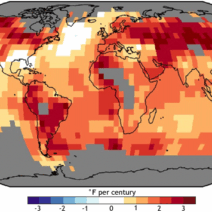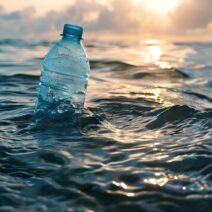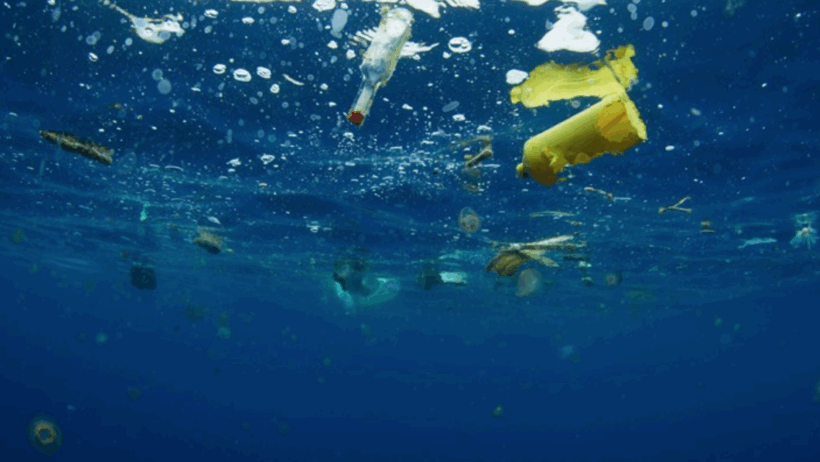Imagine a vast expanse of ocean where plastic debris drifts silently, merging with the waves. What lies beneath the surface? Could these remnants of our consumerist society be playing a role in global warming? This scenario is not merely hypothetical; it is the stark reality of the Great Pacific Garbage Patch and its ramifications. The intersection of microplastics and methane release tantalizes researchers and environmentalists alike. Let’s delve into the intricacies of this pressing issue.
The Great Pacific Garbage Patch, often regarded as a symptom of our plastic pollution crisis, is a colossal assembly of floating debris, primarily composed of microplastics. These microplastics originate from a plethora of sources: discarded items, synthetic fibers shed from textiles, and breakdowns of larger plastic entities. They persist in marine environments for extended periods, creating a toxic legacy. As marine organisms inadvertently ingest these microplastics, they infiltrate the food web, prompting inquiries about their broader ecological impact.
One might ask, how do these microscopic pieces of plastic intertwine with the imminently grave threat of climate change? The connection is multifaceted. Firstly, the degradation of plastics in oceanic environments can emit greenhouse gases, including methane, a potent climate change accelerant. Unlike carbon dioxide, which has a long atmospheric lifespan, methane boasts a much shorter atmospheric presence but is substantially more effective at trapping heat. Given that methane is approximately 25 times more effective than carbon dioxide over a 100-year period, understanding its relationship with microplastics becomes paramount.
Studies have indicated that microplastics can serve as carriers for microbial communities capable of degrading organic matter. Some of these microorganisms, through their metabolic processes, may release methane as a byproduct. In a sense, microplastics are not just pollutants; they are potential catalysts for methane production. This brings forth an alarming prospect: could our marine litter be exacerbating global warming through enhanced methane emissions?
As if this were not disconcerting enough, consider the broader implications of the garbage patch on ocean health. The oceans play a critical role in regulating the Earth’s climate. They absorb approximately a quarter of carbon emissions produced by human activities. However, the inundation of the oceans with plastics disrupts this vital function. When marine ecosystems are compromised, their ability to sequester carbon diminishes, further exacerbating the climate crisis. The interplay between oceanic health and climate stability is delicate and profoundly influenced by human action.
So, what can be done in the face of such overwhelming adversity? The challenge poses itself: how do we mitigate the effects of plastics in our oceans while simultaneously addressing the nuances of climate change? One avenue is the promotion of sustainable practices and the reduction of single-use plastic consumption. By fostering a culture of reusability, individuals can significantly diminish the number of plastics that inevitably infiltrate our waterways.
Furthermore, enhancing waste management infrastructure is essential. Advanced recycling technologies, coupled with increased public awareness, can diminish the reliance on plastics. Environmental education initiatives are crucial in cultivating an informed populace that understands the intricate links between plastic pollution and climate change.
In addition, meticulous scientific research is vital. Continued studies that explore the dynamics of microplastics and their interactions with marine ecosystems will yield insights into potential mitigation strategies. Understanding how microplastics influence methane production and other greenhouse gas emissions is fundamental to addressing this issue at its core.
The implementation of effective policies and regulations to curb plastic production and encourage alternative materials is another pivotal factor. Governments, alongside corporations, must commit to developing biodegradable and sustainable materials to replace conventional plastics. Coupled with stringent regulations on plastic waste management, these measures can form a robust framework for countering the pollution crisis.
Even innovative approaches to ocean cleanup, such as deploying barrier systems to capture floating debris, can hold promise. Organizations dedicated to cleaning oceans exemplify the pressing need for collective action. Engaging communities in cleanup efforts not only aids in removing plastics but also raises awareness about the detrimental effects of pollution on marine ecosystems.
Ultimately, the garbage patch encapsulates a broader narrative: one of neglect, responsibility, and the urgent necessity for change. Every piece of plastic that finds its way into the ocean serves as a reminder of our throwaway culture; a call to action that should resonate across generations. Can we consciously evolve from this detrimental cycle? Are we prepared to confront the multifaceted challenge posed by the intersection of plastics and climate change?
The synthesis of knowledge reveals that the garbage patch’s influence extends well beyond its physical boundaries. As researchers continue to unveil the complexities surrounding microplastics and methane emissions, it becomes unequivocally clear that addressing this challenge requires a comprehensive approach. By fostering a culture of sustainability, enhancing scientific understanding, and galvanizing community action, it may be feasible to address the intricate dance between plastic pollution and the looming specter of global warming.
As we stand at this crossroads, the actions we take now will shape the future of our planet. Can we rise to the occasion and forge pathways to a sustainable future, free from the clutches of pollution and climate instability? The answer lies in our collective commitment to change.





